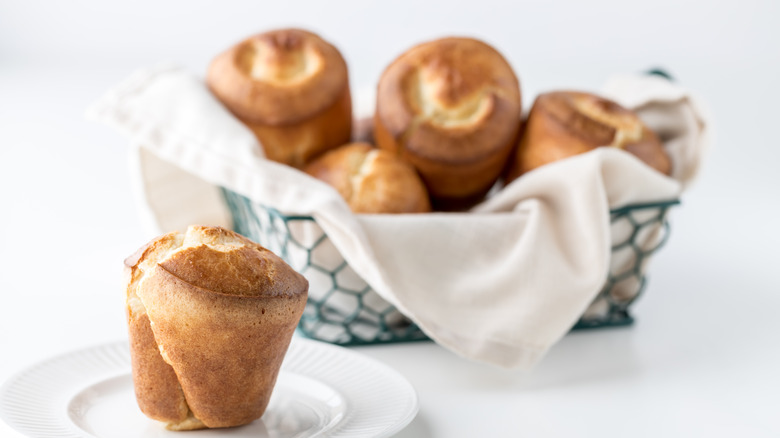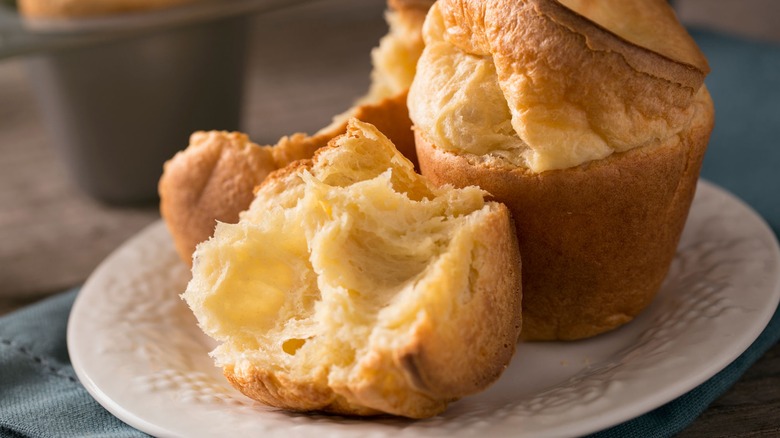The Extra Step To Make Sure Your Popovers Stay Crisp
A buttery and eggy delight, popovers can make any meal feel special. Not quite a roll, but not quite a pastry, these fluffy baked goods are typically made from an airy batter of milk, eggs, butter, and flour. With a hollow interior, popovers are a versatile side dish that can hold anything from gravy to whipped cream. But, it's also not unusual to add other sweet or savory ingredients directly into the batter either. Regardless of your recipe, it's always challenging to make sure popovers don't fall flat and turn into a soggy mess. For the crispest popover, there's one extra step that could make all the difference.
Like an American riff on the Yorkshire pudding, Great British Chefs shares that the British version was first recorded in the early 18th century and was made by placing a pan of batter to cook directly below a roast, allowing fats to drip onto the rolls for added flavor. Although Yorkshire pudding recipes continue to use beef fat when greasing the angled pans they're baked in, Escoffier explains that American popover pans (like that of a deeper muffin tin) are instead coated with butter.
While popovers are exceptionally delicious and complimentary to any dish, they can be intimidating to whip up. Luckily, there is a foolproof way to make sure that your popovers stay "popped" once they're out of the oven.
Poke the popover — trust us!
Like a tasty little science experiment, a properly prepared popover should puff up almost like a soufflé. Far from magic, the science is actually pretty straightforward. As the batter's liquid quickly evaporates due to high baking temperatures, Scientific American explains that this produces steam that becomes trapped by a network of starch, gluten, and protein, allowing the batter to pop without bursting.
However, once you remove these ballooning baked goods from the oven — which should remain closed throughout the entirety of the cooking time — they tend to deflate within a matter of minutes. In order to prevent the pudding from collapsing and turning soft, MasterClass recommends turning popovers out onto a cooling rack and then delicately piercing a hole in the bottom. But why?
Despite the fact that it might seem counterintuitive to poke a puffed-up popover, according to KQED, piercing the pudding with a paring knife, skewer, or even a toothpick actually allows the excess steam trapped inside the popover to be released. Rather than let that moisture condense and turn baked goods soggy, a poked popover will maintain its shape and its iconically crispy exterior.

